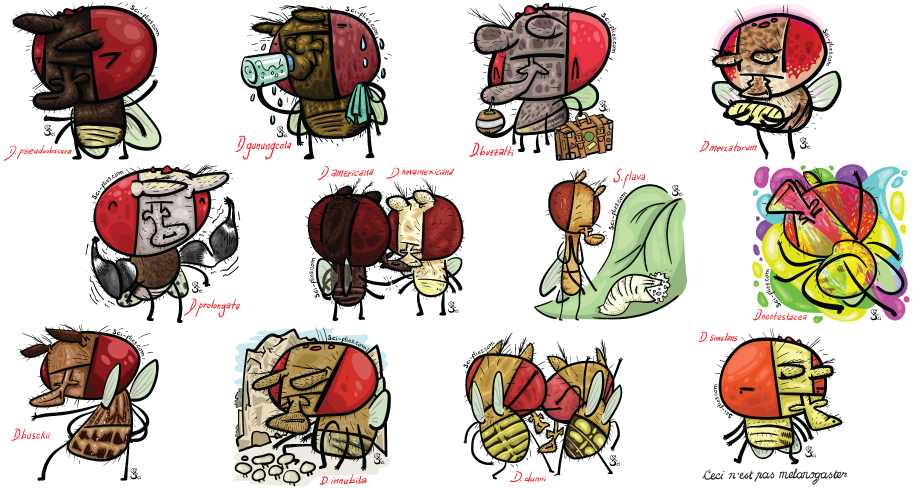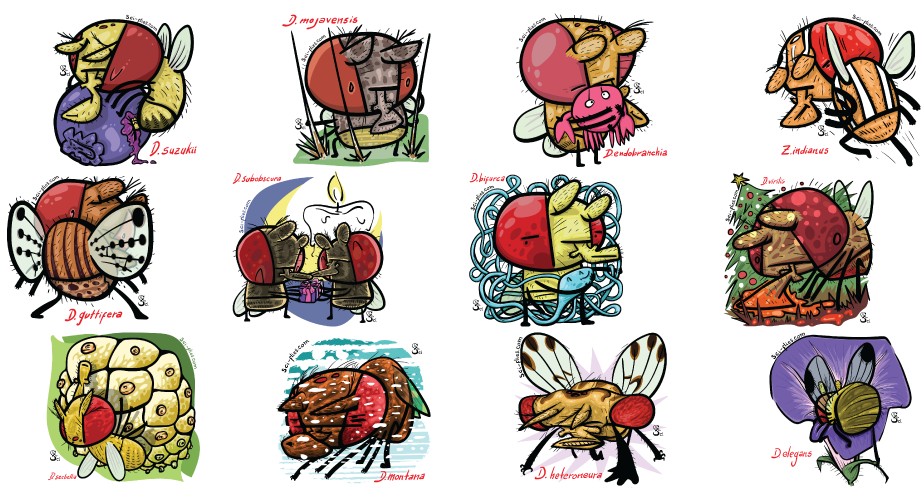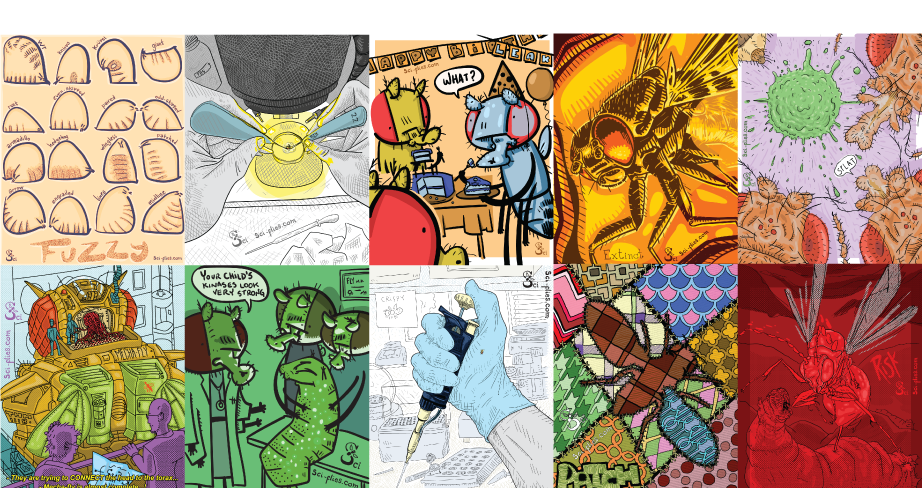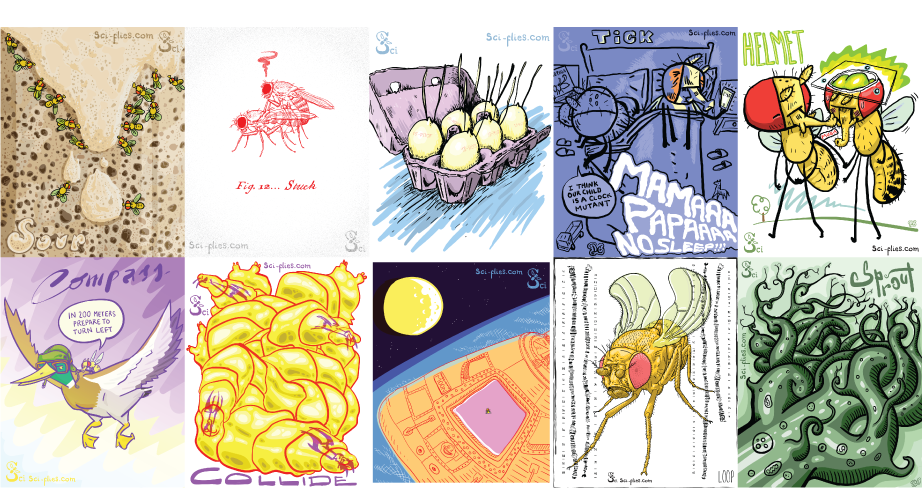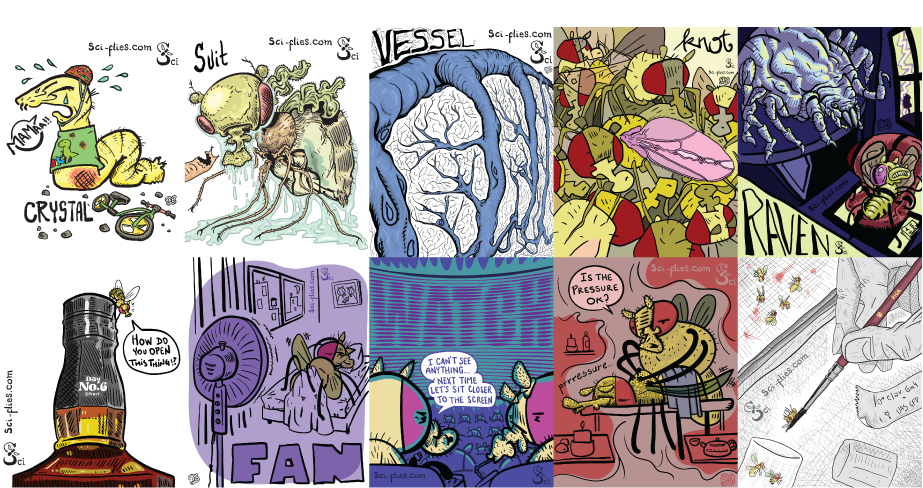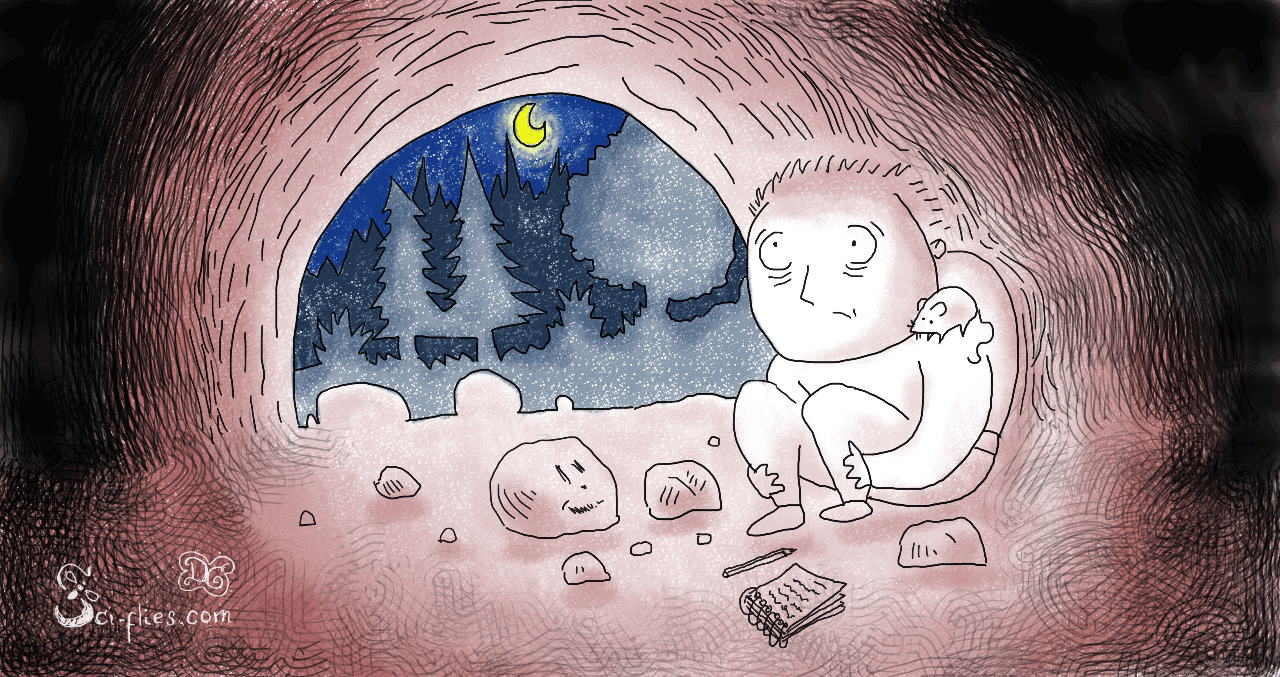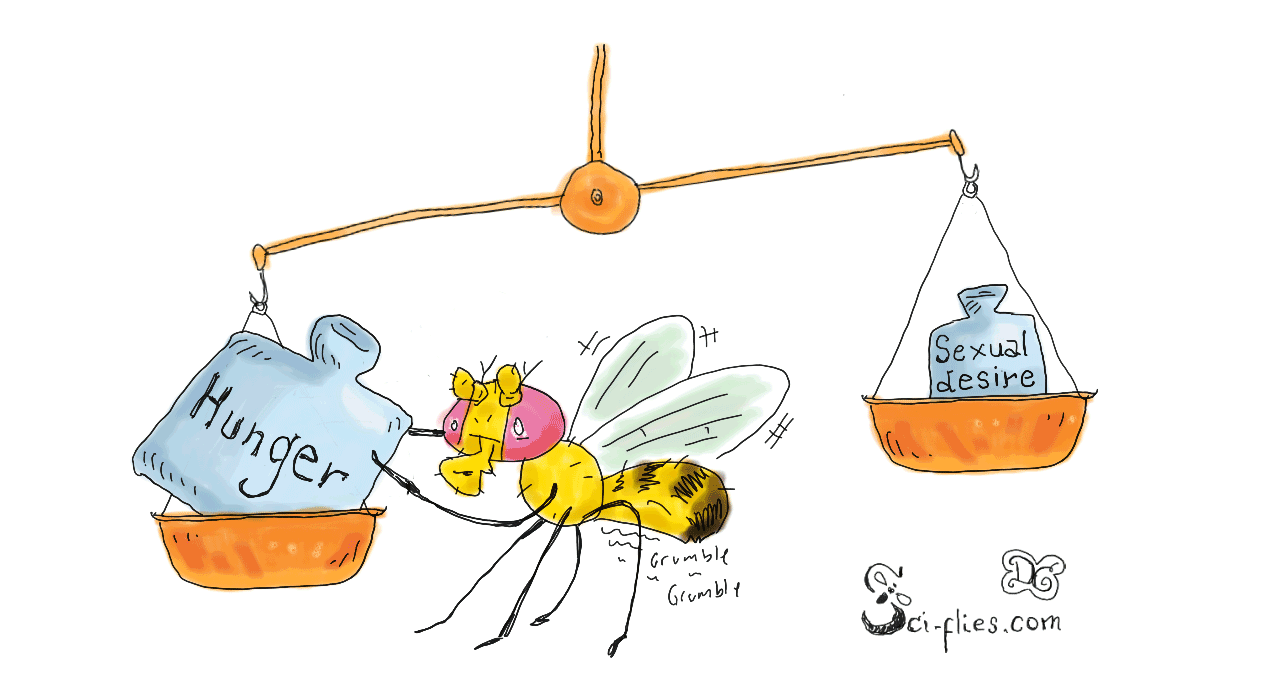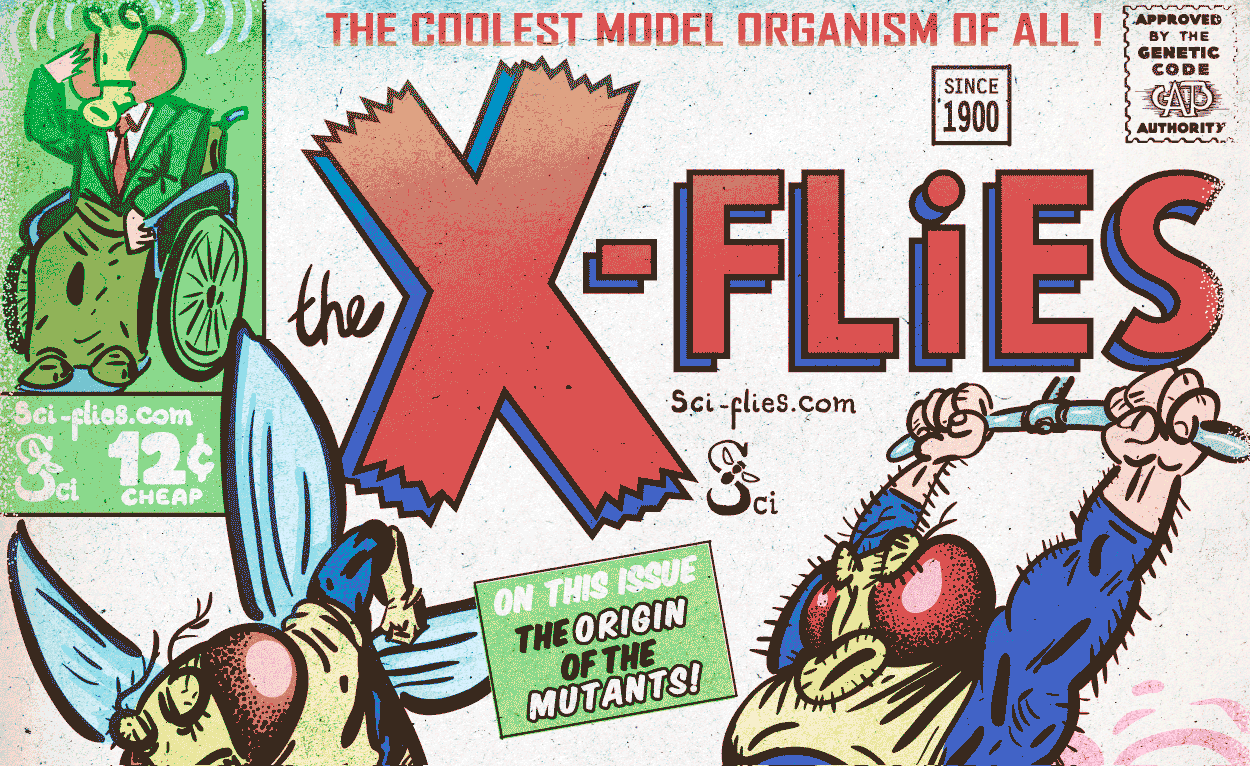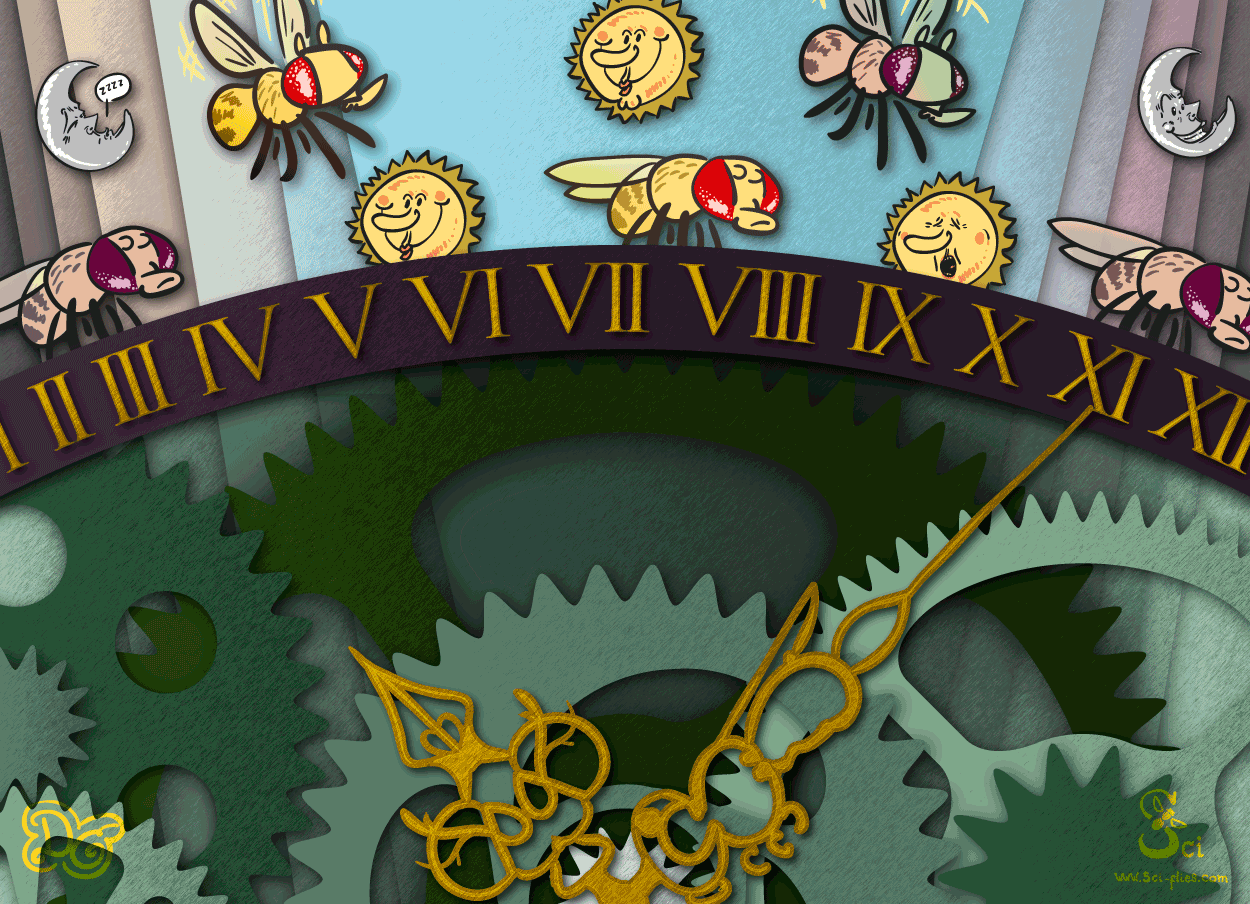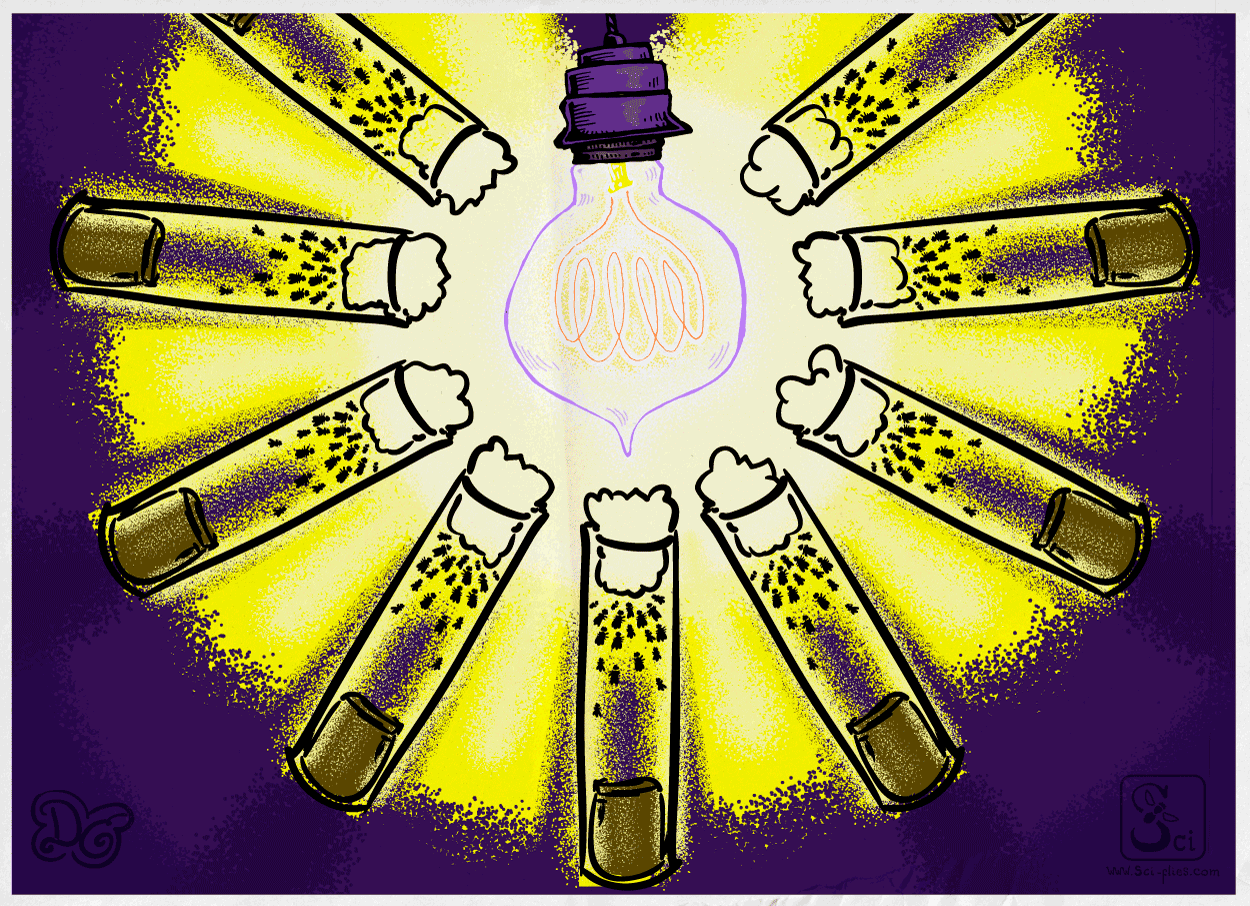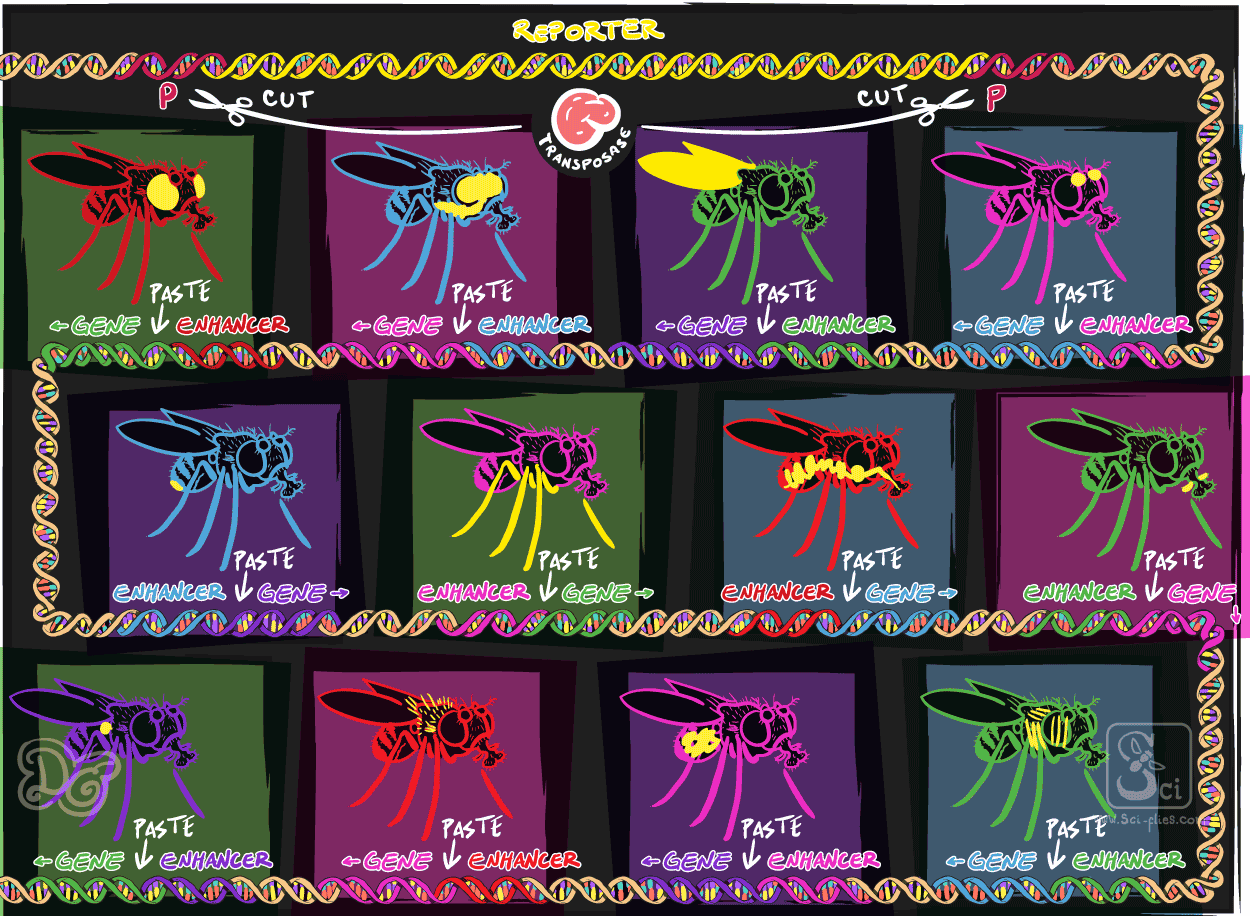THE LIFE CYCLE OF THE FLY
The subject today is the life cycle of the fruit or vinegar fly, Drosophila melanogaster.
A life cycle is the series of changes that happen to an organism until the initial form is produced again. In the case of the fly, the life cycle includes 4 distinct forms.
The fly begins as an egg, inside of which is the embryo.
From the egg comes a worm that we call larva.
This larva grows and at some moment in time it forms a capsule, called a pupa.
After a while, from the capsule emerges an adult fly, which can fly and enter the kitchen and fly over and around the fruit.
We will explore these stages in a bit more detail.
THE EGG AND EMBRYO
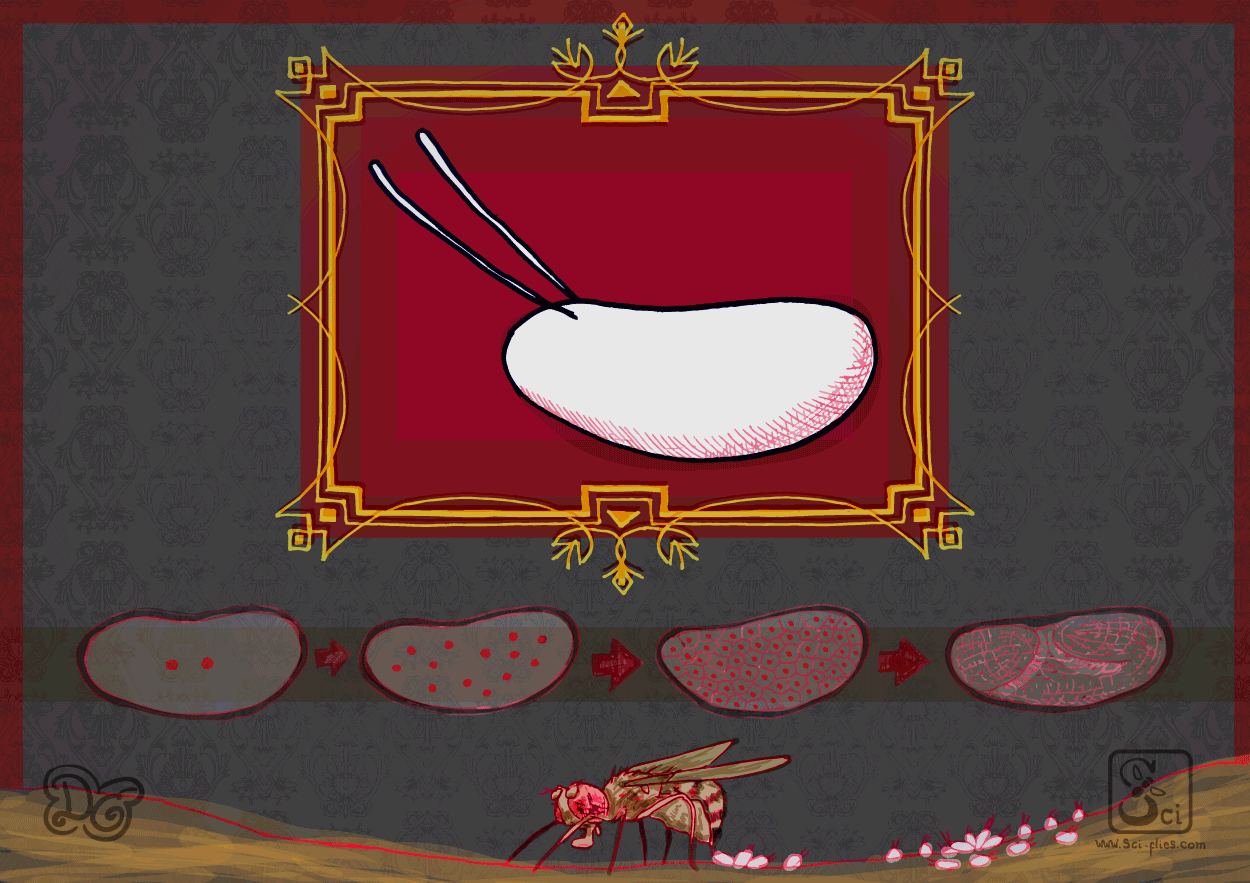
The Drosophila female fly lays eggs on fermented fruit. That is the food the larva will eat when it comes out of the egg.
The egg is formed inside of the female fly. There the ovum fuses with the sperm from the male fly. They form a single unit with two small nuclei inside, which will also fuse and start dividing (in future posts we’ll see what is a nucleus and what is a cell).
This embryo is surrounded by a shell inside of the female fly. The shell has two extensions called the dorsal appendages, that help the embryo breath and give the egg this peculiar look.
Inside of the egg, the nuclei are surrounded by nutritious material (like the egg yolk in a chicken’s egg) that will give the embryo the energy it needs to develop.
The female fly lays the egg and development of the embryo continues outside of the mother.
Cells form, they start dividing, growing and changing shape and moving and forming organs until a larva is finally formed.
Here you can see two very cool videos. In the first one, the dark substance inside the embryo is the yolk (you can see how, when cells are formed, the yolk starts getting surrounded and at the end it is inside of the gut of the embryo/larva).
This process takes little less than 24h at room temperature (25 C). It can be shorter or longer by rising or lowering the temperature (between 18 C and 29C).
The first cells formed are a group on the posterior end of the embryo, called the polar cells.
These will generate the future ovum and sperm in the adult flies. I tell you this because it will be important when we speak about transgenic flies in a few weeks.
THE LARVA
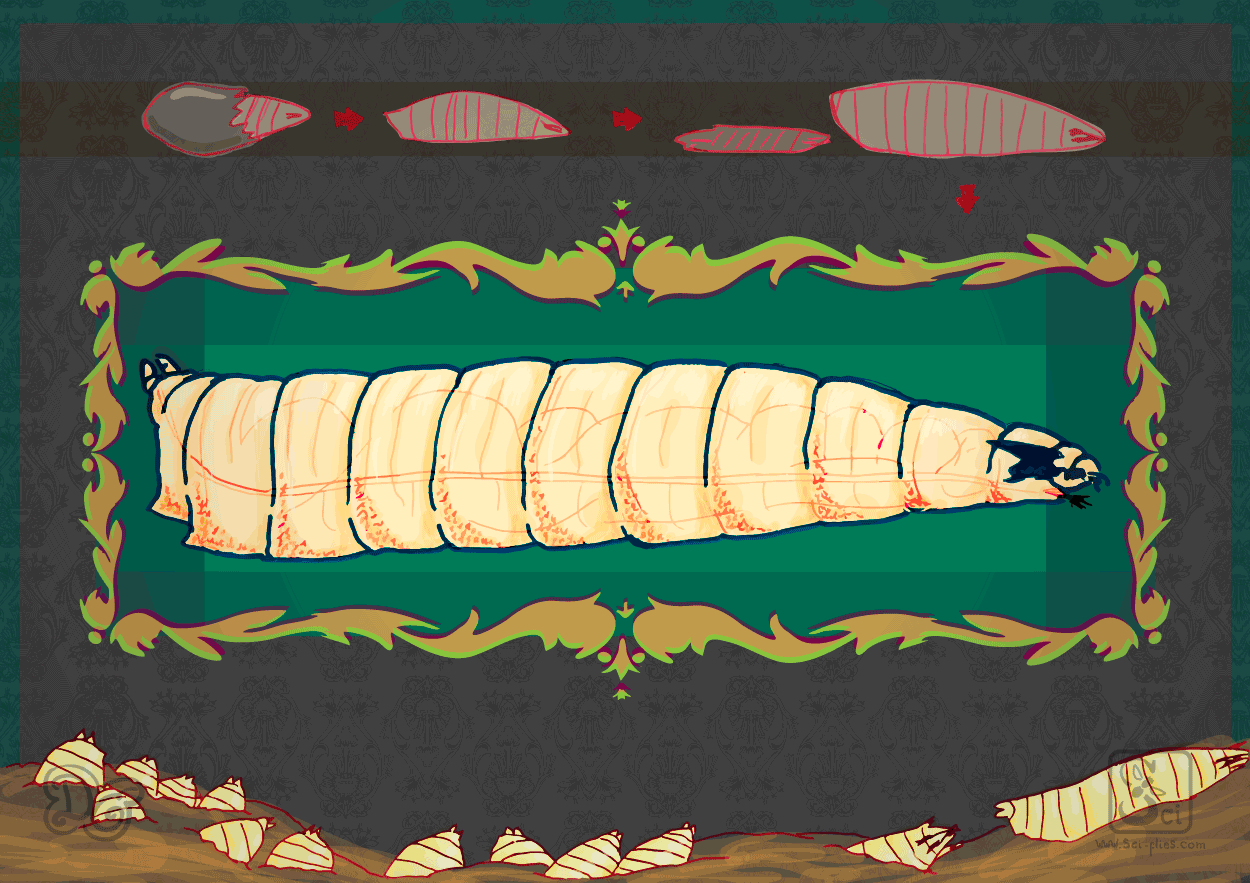
From the egg comes out a larva. A little worm.
The life cycle of the fly has two stages with very distinct and different functions. The larva is a worm that eats and grows. The adult is a fly that flies and reproduces.
They are so different that they appear to be two different species of bug. It wasn’t until 1669 that it became established knowledge that these were different stages in the life of a same animal (thanks to Redi, as we saw, and Jan Swammerdam, a Dutch naturalist who studied many insects in great detail; he was one of the first to use microscopes to dissect insects).
In the larval stage the insect is focused mainly on eating and growing. The larva lives submerged in the food, digging with its mouth hooks downwards and its butt upwards, outside of the food (they have the holes -spiracles- for breathing there).
The larval stage lasts 5 days and during that time the larva increases 200 times its size. It starts as a little worm less than 1 mm long and ends up around 3 mm.
Since insects do not have an internal skeleton, but are maintained by a hard external skeleton (formed by a cuticle) that does not grow with them, the larva must “change its skin” two times during the larval period. This happens at 24 hs after coming out of the egg and again at 48 hs. This process is called a molt.
When the larva has eaten enough and gathered all the reserves it needs to turn into an adult, it leaves the food. It sticks to some Surface, stays still and starts tuning into a pupa.
THE PUPA
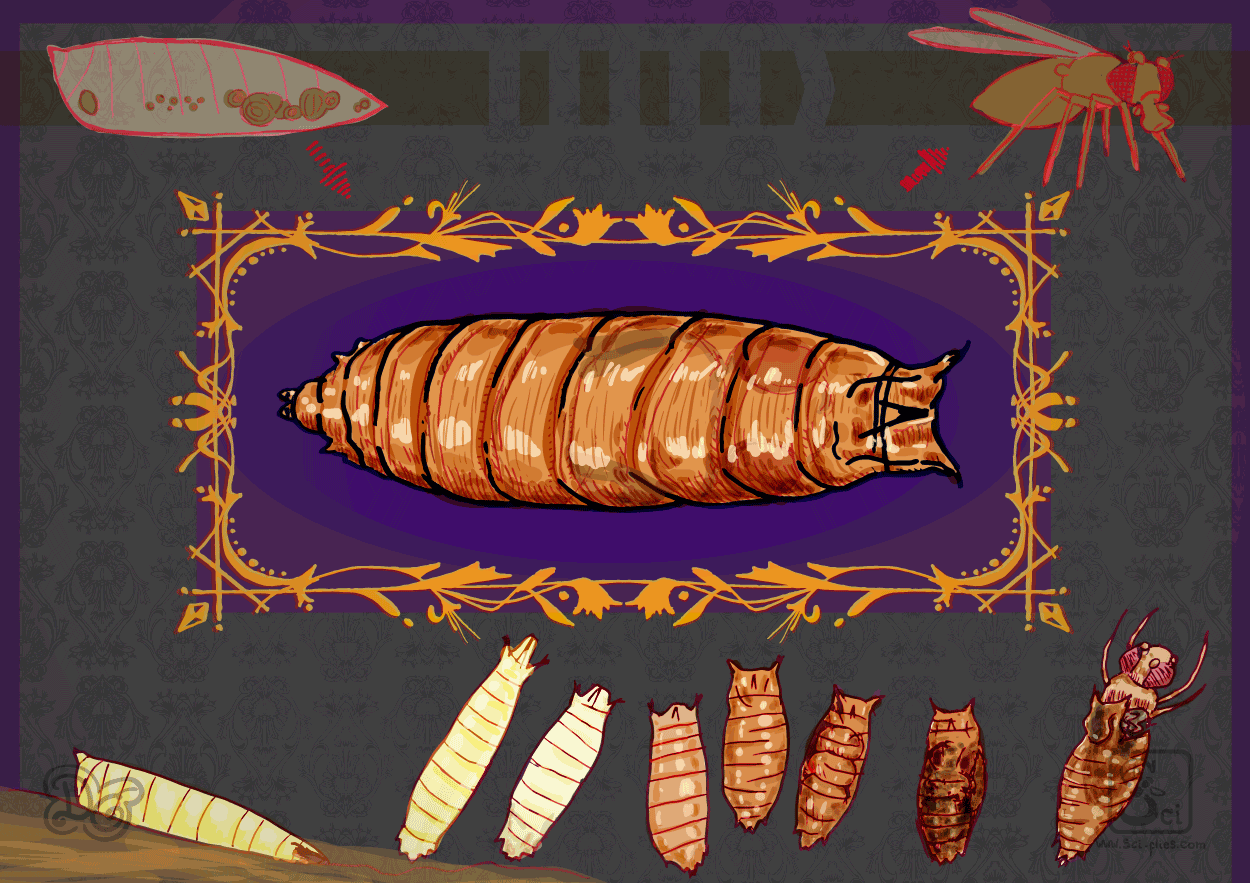
When the larva starts to turn into a pupa, its cuticle starts getting harder and changes color to brown.
It forms a closed hard capsule (called a puparium). Inside everything that was the larva gets dissolved and the adult flies starts being built. This process is called the metamorphosis.
It takes around 5 days to finish the metamorphosis, and during that time the pupa gets darker as the adult is formed in its interior. The adult can be seen through the cuticle of the puparium.
Finally, the adult breaks the capsule and comes out. At the beginning its adult cuticle is soft and slimy and the wings are folded. Slowly, it starts blowing up the wings and getting harder.
A short time later the adult is ready to start flying.
The larva has inside a few particular organs called imaginal discs (discs because of their shape, and imaginal because they will form the imago, another way of calling the adult form of an insect).
These organs are not going to be destroyed during metamorphosis. Instead they will grow, move and change, to generate all the structures of the adult; the wings, eyes, external skeleton, the legs, etc.
THE ADULT FLIES
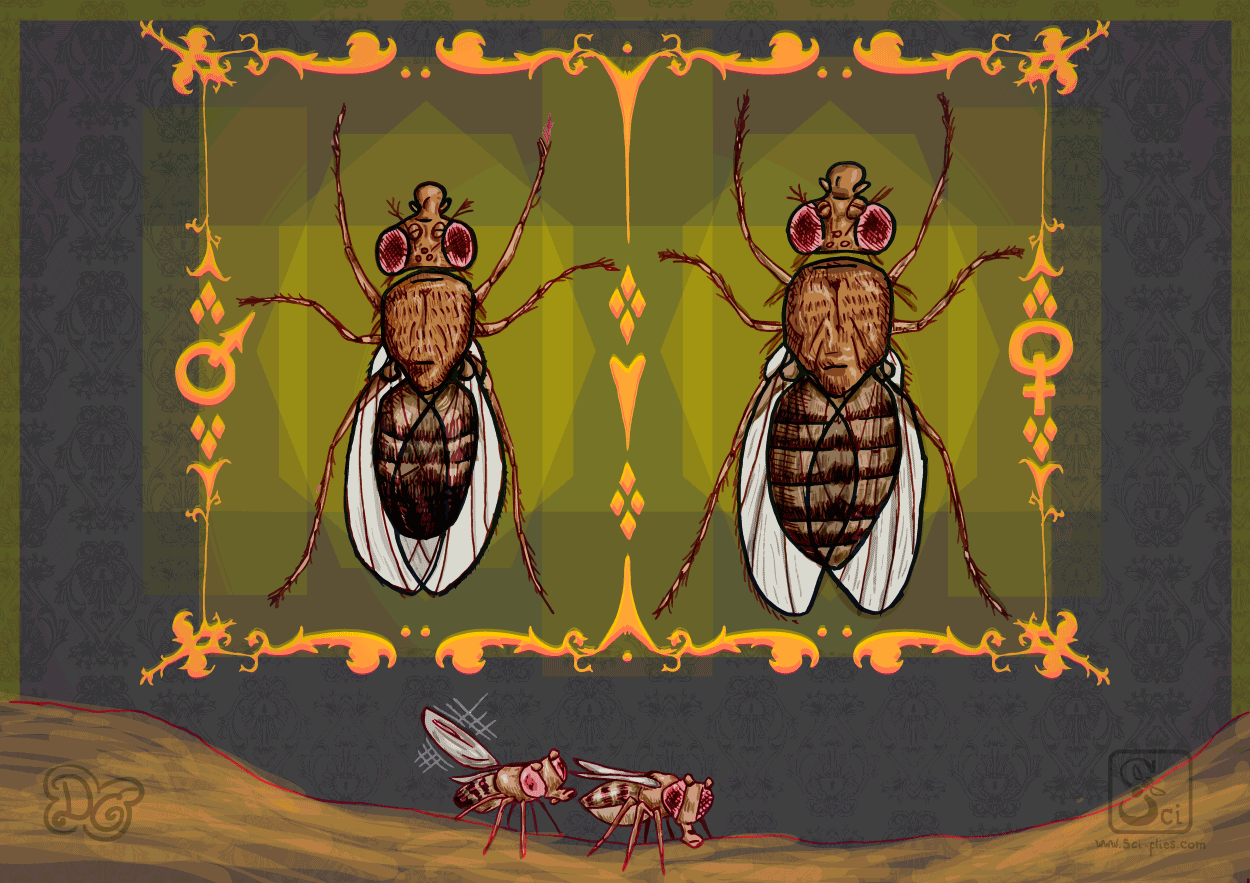
If the main objective of the larva is to eat and grow, the adult’s is to reproduce and start the life cycle again.
The female flies take a couple of days to produce the first eggs. Nevertheless, they can copulate a little time after emerging from the puparium.
The male and the female are different. The male fly is smaller than the female and its most posterior part is black and rounded.
To copulate the male must first do some courtship and the female must accept the male. The courtship behavior is complex, it includes the singing of the male by moving the wings, some turns around the female and certain contacts with her (see for yourselves).
If the female accepts the male, they copulate.
When they do, the females store the sperm of the male in their interior and fertilize the eggs as they produce them.
The female can produce around 50 eggs per day. She flies and when she finds a suitable spot, she lays eggs.
In optimal conditions it takes 10 days from the egg to the adult. Flies can live around 60-80 days.
Here you can see a video with some neat close-ups of the different stages (at some point you will see larvae with blue inside, to study feeding it is common to use food coloring).
Thus, goes on the cycle of life.
Not all insects have this same type of life cycle.
The life cycle I described here is the cycle of the holometabolous insects. These are insects that have 4 well defined periods; the embryo, larva (juvenile period), the pupa (in which metamorphosis occurs) and an adult stage. These are butterflies, flies, ants, bees, wasps, beetles.
The hemimetabolous insects do not have an abrupt change between the juvenile stage and the adult. The juvenile looks very much like an adult but smaller and sexually immature. This stage is called a nymph. The nymph goes through several molts and the last one results in the sexually mature adult. As examples we can mention the locusts, crickets, grasshoppers, cockroaches and cicadas.
All these stages are intensely studied and a lot of details are known about each of them. We will see many in future posts.
From their study we obtained detailed information about a lot of biological processes; embryonic development, feeding and nutrition, growth, cell biology, genetics, decision making processes, learning, memory, biological rhythms, etc.
Next week we will talk about that. Model organisms and why we study flies.
See you next time!
And do not forget to subscribe if you want to know when a new post is published.


